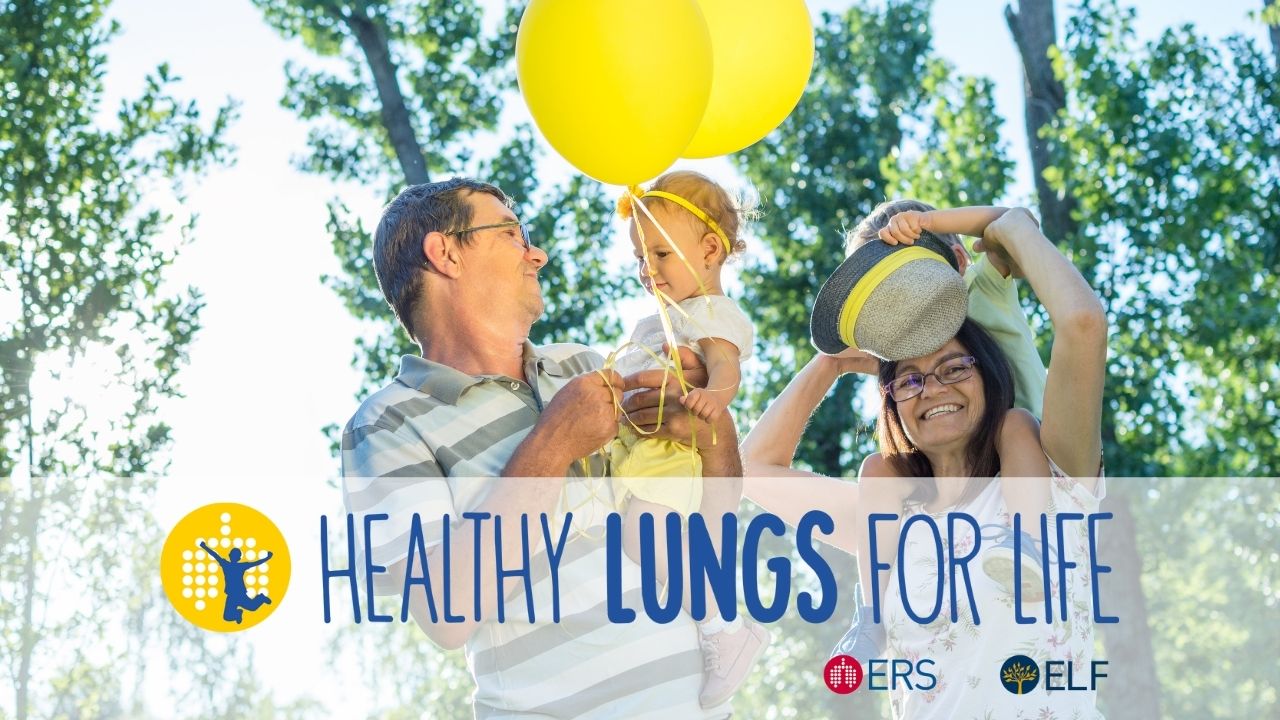Lung cancer screening
Lung cancer screening is the process of using tests to find the disease at an early stage, before symptoms are present.
Unlike other cancers, routine screening for lung cancer is not common across the world. However, research has found that lung cancer screening can improve survival rates. Many health organisations are calling on governments and international organisations to start offering programmes to people considered to be high-risk.
This page looks at what lung cancer screening is, the risks and benefits of screening and the current position of health organisations.
Back to: Lung cancer
Content Table
What is lung cancer screening?
Lung cancer is the biggest cancer killer in Europe; it causes more deaths than colon, breast and prostate cancers combined. When lung cancer is detected based on symptoms, the disease is mostly at a late stage, making treatment much less effective. Screening can detect cancer at a much earlier stage. Finding cancer earlier means that treatments can work better and even cure lung cancer, improving the outcomes for people living with the disease and reducing medical costs.
There are several tests that can look at how healthy our lungs are. The test that is seen as most effective for finding lung cancer at an early stage is known as a low-dose CT (Computed Tomography) scan of the chest. It uses x-ray and computer technology to take multiple pictures of the chest. A computer combines these images to produce detailed pictures of your lungs. These images are more detailed than regular chest x-rays. In addition to the low-dose CT scan, lung cancer screening also includes access to smoking cessation service if you are a current smoker. This does not only apply to cigarettes, cigars etc but also to e-cigarettes, vaping and other forms of smoking regardless of whether they include nicotine or not.
A screening programme involves routinely checking certain groups of people at regular intervals and offering them access to smoking cessation services if they are current smokers. These kinds of programmes exist in many countries for other cancers, such as breast or cervical cancer, where screening is routinely offered to women in a certain age group.
What happens during a low-dose CT scan?
Low-dose CT scans are quick and painless. The scanning machine is usually a large donut-shaped machine with a short tunnel in the centre. The images are produced as you lie on a flat bed that moves under the scanning machine, in and out of the short tunnel. A radiographer operates the machine from the next room to take the pictures that are required. These scans do not require fasting or contrast dye injections.
How does the chest CT scan detect lung cancer?
A radiologist will analyse the images produced to look for any abnormal areas in the lungs that could suggest cancer. A spot seen on the image is known as a lung nodule and is something that is usually followed up. Lung nodules are relatively common. They are rarely a sign of lung cancer, and are more commonly scarring from infections or growths that are not cancerous. While these abnormalities may require monitoring, they often do not require immediate action. If the nodule is considered large or if it grows, this is more likely to be lung cancer. Further tests, including more scans or a procedure to remove a piece of the nodule for testing (biopsy), are then required.
What are the benefits of screening programmes?
Screening programmes can help find lung cancer much earlier, which increases the chance of cancer treatments being effective. Research suggests that using low-dose CT scans is up to 10 times more likely to pick up an early tumour compared to a traditional chest x-ray.
Evidence also suggests that screening programmes can help reduce the number of deaths from lung cancer:
Results from the largest trial looking at lung cancer screening were published in 2011. They found that using low-dose CT scans to screen for lung cancer could reduce the number of deaths by 20% compared to chest x-rays.1
The second largest trial to date was conducted in Belgium and the Netherlands with results published in 2020. It found that lung cancer deaths were reduced by 24% after 10 years when low-dose CT scans were offered to men at high-risk of lung cancer.2
A large study known as iELCAP recently published data on 20 years of follow up of more than 89,000 patients. 81% of patients whose lung cancer was detected by screening had survived as most tumours were found at an early stage.
Screening programmes can also identify other issues– such as chronic obstructive pulmonary disease (COPD) or heart disease. If these issues are found, they will be followed up.
“I am very supportive of targeted screening programmes. It is so important to roll out targeted screening in the way we currently offer for other conditions so people can understand the benefits – for example regular eye checks and diabetic eye tests for specific risks.”
Janette, UK, lung cancer survivor and patient advocate
Are there any risks of screening programmes?
Screening programmes are not perfect and there are some risks involved. To minimise these risks, screening programmes are only offered to people who are considered at a high risk of the disease.
Low-dose of radiation
All x-rays use small amounts of radiation during the process of scanning. The dosage is 90% lower with a low-dose CT scan compared to a traditional chest CT scan. There is still some radiation exposure, which may cause cancer in a very small number of cases. The amount is equivalent to the radiation a person is exposed to on average over 6 months through the natural environment or equivalent to 15 traditional chest x-rays. Recently, there have been some new types of scanners that offer ‘’ultra-low dose CT scans’’. However, there is still not enough scientific evidence to support their routine use in lung cancer screening.
Getting the wrong result
Although it is rare, tests can sometimes give the wrong results, suggesting a person has lung cancer when they do not. This can happen for a variety of reasons, for example if a person is experiencing an infection at the time of a scan. This is called a false-positive result. This result is usually followed up with more tests, which may cause stress and anxiety, but generally they do not lead to invasive testing, such as a biopsy.
Treating a cancer that may have been harmless
Some lung cancers may grow very slowly and are less harmful in comparison to other types. Again, you could be sent for more tests and treatment that may not have been needed. This is called overdiagnosis. It is important to discuss with your doctor the risks and benefits of tests and potential treatments based on any other health problems you may have. This will help you to reach an informed decision on how to proceed. Recent estimates suggest that overdiagnosis in lung cancer screening is relatively uncommon, accounting for 3% of all tumours detected by screening with low dose CT.
Over the last 20 years, research has focused on understanding more about the lung nodules that are detected on CT scans. This has helped to greatly reduce the risks linked with screening to ensure that only the nodules that are cancer are being treated.
What is a national screening programme?
A national screening programme involves finding groups of people nationally who are considered most at-risk of lung cancer and offering lung screening appointments. It is important to ensure all participants have equal access to the relevant healthcare services regardless of geography and socioeconomic background.
Smoking is by far the biggest risk factor for lung cancer. The evidence currently suggests that screening programmes work best when they target people between the ages of 50 and 74 years who currently smoke or people who used to smoke and have quit. However, there are countries that target people up to the age of 80. This decision is based on information from that country that explains how diseases affect different groups of people. Women have been found to respond better to lung cancer treatment at an early stage, and the benefits of screening could therefore be greater for women.
Image courtesy of the HANSE study.
Lung cancer screening programmes could be even more effective when combined with support to help people quit smoking.
These specific groups of people do not account for all lung cancer cases. There are other risk factors linked with lung cancer, such as air pollution, exposure to radon gas or asbestos, or other substances that are toxic for your lungs. By selecting a specific high-risk group, such as older smokers, screening programmes aim to find as many cases as possible, while lowering the risk to otherwise healthy people.
It can be worrying to think about trips to the hospital for scans and tests. Some countries are considering how to make this an easier process for people. For example, in the UK, a pilot scheme was launched offering ‘lung health checks’ in mobile health units that parked at supermarkets. People were able to drop in for a quick check and received follow-up appointments if they were needed.
“There is work still to do to decide which people would receive screening but whichever group it is, the benefits of detecting lung cancer earlier are huge and could save lives.”
Janette, UK, lung cancer survivor and patient advocate
Is there a screening programme available in my country?
To date, USA, China Taiwan, South Korea, Croatia, Poland, Czech Republic are the only countries that offer people the option of screening for lung cancer. This is covered by the national health systems in these countries. Countries such as the Netherlands and the UK offer screening in some locations.
It is the job of health authorities and screening councils to balance the risks and harms and develop robust and effective screening programmes with equal access to all high-risk participants.
What does the future hold?
Most experts believe that the evidence supports the use of lung cancer screening to help save lives and now is the time to implement national programmes.
The European Respiratory Society has joined with the European Society of Radiology in calling for action to implement national screening programmes. More information can be found on the ERS website: Lung cancer screening: cutting costs, saving lives – ERS – European Respiratory Society (ersnet.org)
Recommendations are now needed at the European and international level to support and encourage individual countries to start their own screening programmes. It is likely that national screening programmes will begin in the coming years in more countries across Europe and the world.
The EU-funded SOLACE project is helping to bring the implementation of lung cancer screening across Europe. The project is bringing together experts from across the continent to create clear, concise, and practical guidelines on implementing a lung cancer screening programme as well as tools to identify and enrol specific populations that are currently underrepresented.
Further reading
- A report produced jointly European Society of Radiology and European Respiratory Society in 2020 outlined the latest evidence on lung cancer screening and the steps needed to achieve national programmes.
- The supplementary material from this report can be downloaded and provides an up-to-date summary of the different stages each European country is at with delivering national screening programmes.
- Watch a video from the European Respiratory Society about the importance of lung cancer screening.
This page was last updated in 2025.





